Posts Tagged ‘China’
-
Repairing the house before it rains
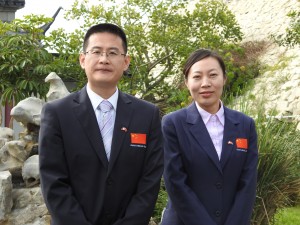 “In China we have this concept to repair the house before it rains. We give great attention to our health and well-being because certainly prevention is always better than cure,” declares Dr Xiaoming Yang, a traditional Chinese medicine physician which is presently giving his services at the Mediterranean Regional Centre for Traditional Chinese Medicine in Kordin, Paola.
“In China we have this concept to repair the house before it rains. We give great attention to our health and well-being because certainly prevention is always better than cure,” declares Dr Xiaoming Yang, a traditional Chinese medicine physician which is presently giving his services at the Mediterranean Regional Centre for Traditional Chinese Medicine in Kordin, Paola.This Centre was established in 1994 as part of a project of cooperation between Malta and China. From then on, every two years, a new Chinese medical team was sent to Malta to replace the previous group in order to continue their duty at this Centre and at clinics in Mater Dei hospital and the general hospital in Gozo. This time, due to new arrangements, this group of Chinese doctors will only stay in Malta for one year until a new group comes to take over.
“Each time, the best Chinese doctors are chosen to come over to Malta since this country is regarded as a very important hub from which to introduce traditional Chinese medicine to other countries as well. Malta’s strategic location makes it ideal to act as a significant connection between Asia, Europe and Africa.”
“Nowadays more and more people are pursuing a healthy lifestyle, and they search for ways in how to keep fit, how to prevent disease and how to prolong life. The key to all these questions is to return to nature because we are part of nature. Nature provides us with all the necessities which are indispensable for our survival. The concept of unity between man and nature is the most basic principle on which this traditional Chinese medicine was founded.”
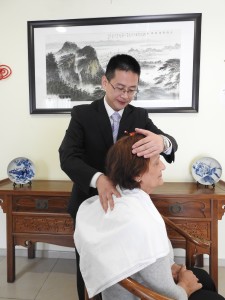 Through his experience at this Centre, Dr Yang noticed that in general Maltese patients, especially the senior population, complain from arthritis, insomnia, frozen shoulder and neck and lower back pain.
Through his experience at this Centre, Dr Yang noticed that in general Maltese patients, especially the senior population, complain from arthritis, insomnia, frozen shoulder and neck and lower back pain.“It is difficult to find a common factor to all these afflictions because many of the patients have different circumstances. However, I did notice some habits and way of life which may lead to these dicomforts, pains and illnesses.”
“In contrast to China, few Maltese people tend to do regular check-ups. Many of them go to the doctor only when they feel pain or some other disturbance. In China, hospitals send out reminders to people to attend to regular tests and many of them comply. This helps the doctor to identify any health problems at an early stage.”
“Another custom in Malta is to attend gyms, often irregularly, without proper supervision or any sensible preparation. Exercising too hard or too long, and training without suitable warming up will eventually lead to health problems. In China, people use traditional martial arts to train the mind, body and soul by doing slow but effective movements which give rise to no strain.”
“Over-exertion is another issue. Although in China I heard that the Maltese enjoy a siesta in the afternoon, in reality I found out that most people have more than one job, starting very early in the morning and continuing late at night. Such long work hours will inevitably lead to over-exertion which will then generate fatigue, strained muscles or disease. Being always so busy makes it also difficult to attend to the required amount of treatments. In fact, while in China, my patients come to my clinic to get treatment around three to five times a week, in Malta, a patient will call to have therapy only once a week or once a month. In my country, people are given permission to leave work in order to have treatment because if a worker is in pain, he may make mistakes. Taking leave to attend therapy does not seem to be as easy in Malta.”
Since regular therapy is essential to heal faster, Dr Yang dedicates himself to teach his Maltese patients how to do self-treatment exercises.
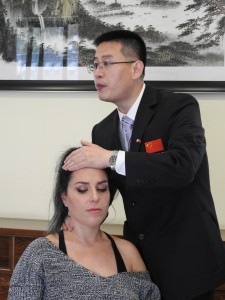 “I have trained Maltese people to make tuina manipulation by themselves generally to treat headache, migraine, neck pain or spinal pain. Knowledge of tuina manipulation involves the pressing of particular acupoints to help release discomfort or pain. This helps to increase the curative effect of my therapy at the Centre.”
“I have trained Maltese people to make tuina manipulation by themselves generally to treat headache, migraine, neck pain or spinal pain. Knowledge of tuina manipulation involves the pressing of particular acupoints to help release discomfort or pain. This helps to increase the curative effect of my therapy at the Centre.”“Tuina manipulation includes the use of hand and arm techniques to massage the muscles and tendons of the body, the stimulation of acupressure points to directly affect the flow of Qi energy through the system of channels and collaterals, and manipulation techniques to realign the musculo-skeletal and bone setting.”
Other services offered at the Centre are acupuncture, cupping, ear acupressure, and moxibustion.
“Traditional Chinese medicine is different from Western medicine since it looks at the body as a whole and does not focus just on the inflicted area. When a patient comes to me, I take time to question him about several factors in his life. I look at his appearance, his tongue, his walk. I ask about his appetite and whether he is suffering from insomnia. Then I continue to search for the root of the problem by touching various acupoints in order to identify where the real trouble is. Sometimes a patient might tell me that he is suffering from a headache but then I realize that the problem is in his neck or that it actually is psychological stress.”
During a recent open day held at the Centre with the theme A Journey into Traditional Chinese Medicine, Dr Yang explained about the different treatments which are being offered at the Centre. He also announced that in March, he would be training Maltese people in traditional Chinese martial arts.
“The intent of traditional Chinese martial arts is to relax and exercise the body in a gentle way by absorbing the energy from the surrounding nature and improving the Qi (energy in the body). For several centuries, these martial arts have helped people to obtain and enjoy a state of good health and well-being.”
 Ms Wei Han, the Chinese interpreter at the Centre provided interesting information about the use of herbs to improve health and well-being.
Ms Wei Han, the Chinese interpreter at the Centre provided interesting information about the use of herbs to improve health and well-being.“Being with these doctors I learnt a lot about traditional Chinese medicine and herbs. In the past, when our ancestors were sick, they went back to nature to find answers in how to regain their health. Through experience and experiments they found the right herbs and they used them as natural medicine to treat illnesses and more important to prevent disease and to maintain health. They also found that certain foods can also be used to treat illness. Some herbs can be used both as food and for medicinal therapy. Ginger for example is often used as spice to give flavour to other foods and obviously it is food. But it can also be used as a herb with medicinal values – it helps us to warm our stomach, to improve digestion and to control nausea.”
As a taster to the participants, the Centre’s chef prepared mutton soup with angelica and ginger, and Chinese berry tea with lily bulbs and red dates.
“We are glad to invite at our Centre all those who are interested to know more about traditional Chinese medicine, traditional Chinese martial arts and traditional Chinese philosophy. Visitors can also enjoy our traditional Chinese garden which though small, it incorporates all the typical philosophical ideas and most important elements. Stones in the garden represent the body of the world, like hills and valleys. Water is the spirit of the world providing oxygen, like blood running through the veins. The pavilion is always located at the best point where one can watch the sunset and the sunrise, and meditate about life or simply relax and have a rest. Our patients find this garden optimal to calm down and to escape from the outside world where pain ceases to exist, at least for a short time,” concluded Ms Han.
For more information, one can contact the Mediterranean Regional Centre for Traditional Chinese Medicine on 2169 1799.
(This feature was published in The Times of Malta in 2018)
-
Free weekly acupuncture treatments in Gozo
Since 1994, several Chinese medical teams have been offering medical treatments to the Maltese public from the Mediterranean Regional Centre for Traditional Chinese Medicine in Kordin. This professional service extends also at Mater Dei Hospital and at Gozo General Hospital.
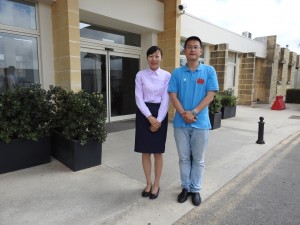 I accompanied Dr Xiao Ming Yang and Ms Wei Han on their weekly visit to Gozo General Hospital.
I accompanied Dr Xiao Ming Yang and Ms Wei Han on their weekly visit to Gozo General Hospital.“Every Wednesday afternoon, I treat an average of 24 patients with acupuncture. Many of the patients book the treatment at the hospital, however I do not mind treating also those individuals who happen to come by,” explained Dr Yang.
Dr Yang and Ms Han’s dedication to their work is impeccable. They take the responsibility to carry with them all the required material from Malta to Gozo. From time to time, they also provide the patients with bonus treatments to take home with them.
“Acupuncture treatments are provided free of charge according to an agreement which was done between the Maltese and the Chinese governments. This is a way of showing the mutual respect which exists between the two countries.”
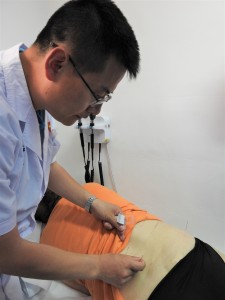 Around 30 patients were waiting for Dr Yang at Gozo General Hospital. The relationship between the Chinese doctor and his Gozitan patients was clearly amicable as he went round each patient and applied the required acupuncture treatment.
Around 30 patients were waiting for Dr Yang at Gozo General Hospital. The relationship between the Chinese doctor and his Gozitan patients was clearly amicable as he went round each patient and applied the required acupuncture treatment.The popularity of this treatment is definitely pushing for more adequate space in order to provide this service to all those who need it. For a more effective benefit of this Chinese traditional therapy, several patients have also expressed their wish to increase the frequency of the doctor’s visit to at least twice a week.
After the acupuncture treatment, Ms Han, the Chinese interpreter at the Centre, prepared five different herbal teasfor those who attended. She also shared interesting information about the benefits of these teas.
“Chinese herbal teas have been used for centuries to provide healthy refreshment. Drinking herbal teas is a natural and effective way to gain various health benefits. Each tea can have one ingredient or many with different benefits,” revealed Ms Han.
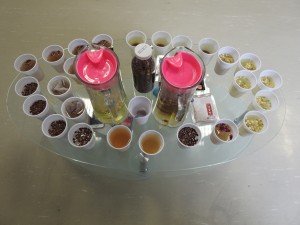 “Jasmine tea is one of the most popular flower teas among foreigners because of its pleasant scent and taste. In ancient times in China, this tea was mainly reserved for royalty since it has so many health benefits. The high level of antioxidants in the tea help to boost the body metabolism making exercise more effective. This may result in weight loss and in improvement in the digestive process. Moreover, for those with cardiovascular problems, jasmine tea can be a huge help as it aids to lower cholesterol levels and high blood pressure, thereby reducing the risk of heart attacks and maintaining a healthy cardiovascular system. This tea is also ideal for people suffering from chronic discomfort, such as back pain, joint pain and arthritis, because it has anti-inflammatory properties which can help reduce swelling and inflammation of joints.”
“Jasmine tea is one of the most popular flower teas among foreigners because of its pleasant scent and taste. In ancient times in China, this tea was mainly reserved for royalty since it has so many health benefits. The high level of antioxidants in the tea help to boost the body metabolism making exercise more effective. This may result in weight loss and in improvement in the digestive process. Moreover, for those with cardiovascular problems, jasmine tea can be a huge help as it aids to lower cholesterol levels and high blood pressure, thereby reducing the risk of heart attacks and maintaining a healthy cardiovascular system. This tea is also ideal for people suffering from chronic discomfort, such as back pain, joint pain and arthritis, because it has anti-inflammatory properties which can help reduce swelling and inflammation of joints.”“Rose tea is used to relieve menstrual discomfort or heavy period. It can also regulate the sleep cycle and pattern. For those who suffer from insomnia or have disturbed sleep, drinking rose tea before going to bed might be a great option. Rose tea can also improve digestion, detoxify the body, and relieve respiratory infections.”
 “Buckwheat tea is a kind of grain tea and it can reduce blood glucose and cholesterol. It really has significant cardiovascular benefits and helps to lose weight.”
“Buckwheat tea is a kind of grain tea and it can reduce blood glucose and cholesterol. It really has significant cardiovascular benefits and helps to lose weight.”“Rhodiola tea is made of dry flowers, leaves and roots of a wild plant called Rhodiola Rosea, which grows best in the high, cold mountains, such as Tibet, Siberia and Arctic areas.It has good effects on anti-aging and longevity.In ancient times, Chinese emperors used to send expeditions to remote areasin search of this golden root to make pills of immortality. This tea can also protect human cells especially skin cells from aging, so a lot of beauty products use it as one of their ingredients.”
“Jujube is a kind of sour date. Thanks to its special healing properties relating to insomnia, it is regarded as the “Oriental sleeping fruit.”Jujube seed tea can calm the mind and smooth the nerves. Therefore, it is often used to treat insomnia, nightmares, night sweats, restless sleep and neurasthenia.”
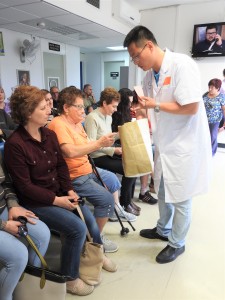 At the end of this meeting, participants were also provided with a packet of tiger balm, green oil and plasters. Tiger balm has been in use in China from the 1870s and it serves to relieve back pain, joint pain, stiffness, sprains, arthritis, headaches, sinus congestion, and discomfort from mosquito bites. Green oil has the same effect as tiger balm. Plasters are mainly used to relieve back pains, joint pains, arthritis, chronic sprain, and rheumatism.
At the end of this meeting, participants were also provided with a packet of tiger balm, green oil and plasters. Tiger balm has been in use in China from the 1870s and it serves to relieve back pain, joint pain, stiffness, sprains, arthritis, headaches, sinus congestion, and discomfort from mosquito bites. Green oil has the same effect as tiger balm. Plasters are mainly used to relieve back pains, joint pains, arthritis, chronic sprain, and rheumatism.For more information, one can contact the Mediterranean Regional Centre for Traditional Chinese Medicine in Kordin on 2169 1799 or the Gozo General Hospital on 2210 6000.
(This article was published in The Malta Independent on Sunday on 5 June 2018)
-
Ancient practices to relieve modern issues
The Mediterranean Regional Centre for Traditional Chinese Medicine in Kordin, Paola offers a variety of services which aim to improve health and wellbeing. Based on Chinese medical practices which date to more than 2000 years of knowledge, the Centre is run by a team of Chinese doctors who promote an alternative medicine which is well beyond what conventional medicine is about. Besides providing medical treatments, the Centre acts also as a source of information for those who would like to learn more about these ancient practices.
On Sunday, 25 March 2018, a series of three lectures which were organized at the Centre introduced the participants to the themes of neck problem therapies, moxibustion treatments, and the perimenopausal syndrome.
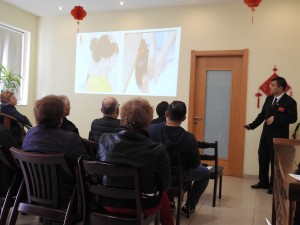 Dr Lu discussed the widespread problem of neck pain and showed some exercises which one can use to avert or to alleviate neck pain.
Dr Lu discussed the widespread problem of neck pain and showed some exercises which one can use to avert or to alleviate neck pain.“Neck pain does not only affect the neck area but it can also lead to several discomforts along other parts of the body. Nowadays many people tend to spend long hours in incorrect postures while looking down at mobiles, sitting at office desks while working on a computer, and watching tv in bed or on a sofa. These are some of the common traits which lead to muscle stress and pain. It only takes little to avoid these mistakes: mobiles should be read at eye level, office chairs should allow workers to sit straight and look comfortably at the computer, tv should not be watched while lying down, and an appropriate pillow should support the spine at the right curve to allow the neck to relax. Ideally, one should change posture regularly to relieve or avoid muscle soreness.”
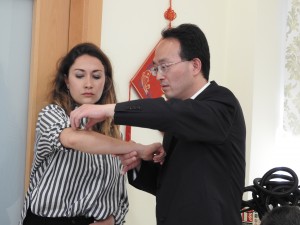 Dr. Zhang explained the benefits of moxibustion treatments and demonstrated how these are applied to patients.
Dr. Zhang explained the benefits of moxibustion treatments and demonstrated how these are applied to patients.“Moxibustion is a traditional Chinese medicine therapy which consists of burning dried mugwort leaf, also known as moxa, to bring relief from pain to the patient. This leaf has a pleasant fragrance and is easy to ignite. Moxibustion is safe and easy to operate. It is also non toxic and has no adverse reactions. However, it should only be done at a professional clinic since there is a risk of getting burnt if not handled properly. Doctors apply moxa to warm meridian points along the body in order to stimulate blood circulation.”
Dr Ma talked about women’s health care and focused on the perimenopausal syndrome which affects a wide section of the female population from the age of 45 to 55. She indicated some exercises which help to relieve stress and also improve memory.
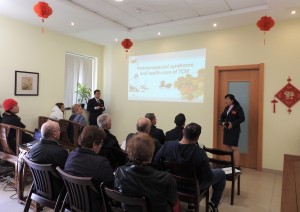 “Perimenopause refers to the time when the body makes the transition to menopause, thereby marking the end of the reproductive years. At this point, women may undergo various symptoms which can make their life stressful and difficult. Sudden hot flashes, insomnia, vaginal dryness and discomfort during love-making, headaches, forgetfulness and emotional instability are some of the main occurrences. Although this change is a natural process, ideally the outcome of menopause should not take place abruptly since this might seriously disturb a woman’s life and also the lives of all those around her. By living a healthy life, eating properly, doing exercise and keeping positive, a woman may help herself to allow a smoother transition which will lead to lesser repercussions. After all, life is what you make it.”
“Perimenopause refers to the time when the body makes the transition to menopause, thereby marking the end of the reproductive years. At this point, women may undergo various symptoms which can make their life stressful and difficult. Sudden hot flashes, insomnia, vaginal dryness and discomfort during love-making, headaches, forgetfulness and emotional instability are some of the main occurrences. Although this change is a natural process, ideally the outcome of menopause should not take place abruptly since this might seriously disturb a woman’s life and also the lives of all those around her. By living a healthy life, eating properly, doing exercise and keeping positive, a woman may help herself to allow a smoother transition which will lead to lesser repercussions. After all, life is what you make it.”More information about the Mediterranean Regional Centre for Traditional Chinese Medicine and its services is available on Facebook or by calling on 2169 1799.
(This feature was published in The Times of Malta on 1st April 2018)
-
Love is strange doctor
 Choosing a unique white wedding dress, sending out elegant invitations to guests, being led down the aisle by one’s father, shamelessly removing the garter, tossing the colourful bouquet, and giving out souvenirs may be considered as universal marriage traditions. However the reality is far from that. Rituals and customs could vary greatly between cultures, religions and countries, ranging from the sweet and romantic, to the strange and bizarre and at times even to the shocking and outrageous.
Choosing a unique white wedding dress, sending out elegant invitations to guests, being led down the aisle by one’s father, shamelessly removing the garter, tossing the colourful bouquet, and giving out souvenirs may be considered as universal marriage traditions. However the reality is far from that. Rituals and customs could vary greatly between cultures, religions and countries, ranging from the sweet and romantic, to the strange and bizarre and at times even to the shocking and outrageous.Ghost weddings – China
Whereas a wedding is generally expected to be the culmination of a loving and living bride and groom, ghost weddings are still celebrated in some provinces of northern and central China such as Shanxi and Henan. Such weddings are based on a grisly 3000 year old tradition which recommends that the unmarried dead sould not be left alone in the afterlife, otherwise the deceased’s family might get cursed.
Originally this ritual was strictly for the dead and it involved two unmarried dead people. A wedding ceremony was duly celebrated and the two were buried together in the groom’s grave. Mainly aimed for young unmarried men who worked in coal mining and often suffered fatalities, this custom provided the bereaved parents with the opportunity to help their sons find a soulmate and be at peace even after death. It must be said that traditionally, parents felt obliged to assist their sons to settle down in a marriage.
Although this tradition is supposed to have ended, especially with the sale of corpses being outlawed in China in 2006, studies and police reports show that this ritual is more alive than ever. Worse than that, besides being practised secretely, this custom has mutated to a more appalling nature, leading to grave robberies and at times even murders. Prices for female corpses or human remains have increased considerably as parents are ready to carry the financial burden, no matter how difficult it might be.
Fat farms for brides – Mauritania
While many brides go on strict diets to lose weight before the wedding, in rural Mauritania, an attractive bride is a girl with stomach rolls, stretch marks and overlapping thighs. In this society, a thin girl is considered inferior and unappealing and her slim figure will bring shame to her family. An old tradition in this country, known as leblouh, ensures that girls are round and corpulent at their weddings by force feeding them from the tender age of 5.
During the school holidays or in the rainy season, when milk is abundant, girls are sent to ‘fattening farms’ where they are constrained to eat by older women, their aunts or grandmothers. A typical daily intake for a six year old includes two kilos of pounded millet blended with two cups of butter, as well as 20 litres of camel’s milk. Refusal to eat all this food will lead to a subtle form of corporal punishment such as squeezing the girls’ toes between two sticks. Vomit has to be consumed again.
Historians claim that this tradition dates back to pre-colonial times when Mauritania’s population consisted of nomad white Moor Arabs. At the time, a man was deemed wealthy and well respected if his wives could afford to sit still all day and leave the household chores to black slaves. This laziness led these women to gain weight and by time, being overweight became culturally acceptable and regarded as high class.
Even though health campaigners are trying to eradicate this old tradition, the leblouh practice has seen a resurgence in recent years. A successful fattenning process will make a girl of 15 look 30, making it easier for her to get married. Sadly, this custom causes endless illnesses and health problems to these girls in later years.
Cursed wives – India
When searching for a girl to marry, one tends to be attracted by looks or a charming personality. Yet in India, a man has to watch out for more than that since a woman born under Mangal Dosha (a Hindu astrological combination under the influence of planet Mars) is believed to be cursed and after marriage, she might lead to his untimely death.
Such women are known as Mangliks and are looked upon with fear in Hindu society. Their choice of spouse is very limited as they are clearly not regarded as ideal prospective matches in the arranged marriages which take place in this country.
A remedy to break this curse is to marry a clay pot during the kumbh vivah ceremony. This function is just like a real Hindu wedding where the woman has to wear a wedding dress and jewelery along with a thread. A priest is invited to chant the mantra and a marriage celebration takes place between the woman and the pot. Once the wedding is over, the bride will change her clothes, remove the thread and tie it around the pot. Later, when no one is watching, the pot will be drowned in a pond or in a river, thereby releasing the woman from the curse and making her suitable to marry a man.
Spitting on the bride – Kenya
One of the most emotional moments in a wedding is the point when a father accompanies his daughter down the aisle, then removes her veil and kisses her on her cheek before handing her over to her future husband. Yet although similar emotions will be involved during a wedding celebration of the Maasai people in Kenya, the father of the bride will spit on her in order to bless her.
Whereas spitting in many cultures is associated with disgrace and humiliation, in this tribe, this act is regarded to bring good luck and fortune. In fact, Maasai tribesmen will spit on their hands before greeting and shaking hands with elders and it is also customary for them to spit on newborns in order to avert any bad luck.
During a Maasai wedding, the bride’s head is shaved and lamb fat and oil is applied on her head. After her father has spit on her head and breasts, she will leave with her husband and walk away without looking back since she is fearful that she might turn into stone.
(This article was published in The Wedding Supplement issued with The Sunday Times of Malta dated 12th March 2017)
-
East meets West
For many Western societies, the idea of health is the absence of disease.Yet this is not the case in China, where the aspect of health embodies a comprehensive system that focuses on a balanced lifestyle which is in harmony with nature. Evolving along thousands of years of experimentation and studies about health and longevity, the philosophy of traditional Chinese medicine is today imbued with an ancient wisdom that aims to heal and regenerate not only the body but also the mind and soul.
From 1994, this ideology is being fostered locally by means of The Mediterranean Regional Centre for Traditional Chinese Medicine which is located in Kordin, Paola. Run by a Chinese medical team which changes every two years, this centre has been regularly registering a remarkable increase in Maltese people who attend to receive treatment.
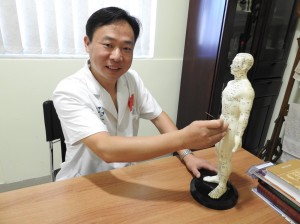 “We are very satisfied with the Maltese people’s response to our services,” remarked Dr Xu Jinhua, the present director of the centre. “In fact, last week, we treated 100 patients.”
“We are very satisfied with the Maltese people’s response to our services,” remarked Dr Xu Jinhua, the present director of the centre. “In fact, last week, we treated 100 patients.”Dr Xu is no new face in this centre since this is the second time that he has joined the Chinese medical team to work in Malta. He was here four years ago and yet he had to undergo again an eight-month preparation programme in Nanjing before coming to our country.
His interpreter, Xiaoyan Sun, described how the team of four Chinese doctors, a chef and herself were required to attend to this outward training in order to be able to provide the best service in Malta.
 “Apart from physical training, our preparation was concentrated on strengthening our ability to communicate in English and learning basic details about Maltese culture and religion. Moreover, all members of the group were familiarized with some general fundamental knowhow to enable us collaborate better. This included learning rudimental information about traditional Chinese medicine in order to be able to co-operate with the doctors, and also getting used to cook so that we could relieve our chef from time to time. Meanwhile, we were also prohibited from visiting home in order to get adjusted to the experience of living in another country, whilst at the same time the group became more like a family.”
“Apart from physical training, our preparation was concentrated on strengthening our ability to communicate in English and learning basic details about Maltese culture and religion. Moreover, all members of the group were familiarized with some general fundamental knowhow to enable us collaborate better. This included learning rudimental information about traditional Chinese medicine in order to be able to co-operate with the doctors, and also getting used to cook so that we could relieve our chef from time to time. Meanwhile, we were also prohibited from visiting home in order to get adjusted to the experience of living in another country, whilst at the same time the group became more like a family.”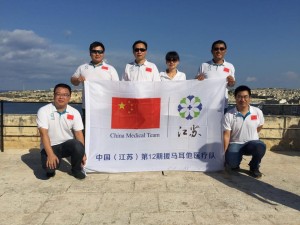 Genuine dedication and commitment is the order of the day as these four Chinese doctors, who are specialized in acupuncture, provide their services at this centre in Paola, at Mater Dei Hospital, and at Gozo General Hospital. Additionally, as Dr Xu revealed, this team was sent with a further task to set up a Chinese clinic at St Luke’s hospital.
Genuine dedication and commitment is the order of the day as these four Chinese doctors, who are specialized in acupuncture, provide their services at this centre in Paola, at Mater Dei Hospital, and at Gozo General Hospital. Additionally, as Dr Xu revealed, this team was sent with a further task to set up a Chinese clinic at St Luke’s hospital.Diagnosis of traditional Chinese medicine practitioners vary considerably from that of Western doctors.
“From our first glance at the patient, we get a good indication of what the client might be suffering from,” explained Dr Xu. “Immediate tell tale signs are evident in the way one walks, in one’s facial expression and posture, in the colour of the skin, and whether one is thin or fat. Furthermore, a person’s vitality shows through the brightness of the eyes, the colour of the lips, and the state of the hair.”
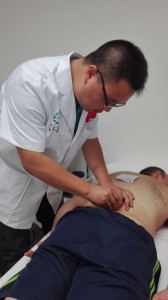 It was interesting to discover that much information is also obtained by looking closely at a person’s tongue since its colour, shape and coating reflects the condition of the internal organs.
It was interesting to discover that much information is also obtained by looking closely at a person’s tongue since its colour, shape and coating reflects the condition of the internal organs.“Our investigation includes also auscultation which is done by listening to the patients’ voice, sounds of breathing, and coughing. In the old days, the diagnosis concerned also olfaction; that is smelling the odour of the patient. However today this is somewhat difficult since people use many perfumes and this hides the personal odour of individuals.”
Even pulse-taking is different since the Chinese physician uses three fingers: the index finger to check the heart and lungs, the middle finger to listen to the liver, and the ring finger to test the kidney.
“During this time, the doctor also discusses with the patient about his lifestyle, his diet, whether he practices some form of exercise and if he has any stressful atmosphere at home or at work. This practice takes place in order to see whether the patient is suffering from any sort of imbalance which is resulting in pain. For the treatment to be effective, it is very important that a good relationship is created between the patient and the doctor.”
 Along these twenty-one years, the treatments at this clinic were mainly focused on acupuncture and massage. Yet this year, Dr Xu is keen to introduce a further specialized treatment which involves the use of traditional Chinese herbs.
Along these twenty-one years, the treatments at this clinic were mainly focused on acupuncture and massage. Yet this year, Dr Xu is keen to introduce a further specialized treatment which involves the use of traditional Chinese herbs.“Chinese herbs are used widely in China. There is a vast selection of these herbs, and all have their own particular characteristics and qualities. Their utilization could offer various benefits to the Maltese people. However, till now, we are prohibited from importing these herbs to Malta to treat the locals with them.”
Probably, this restriction is due to the fact that these herbs are alien to our Western doctors. Nonetheless, possibly the time has come to make a change.
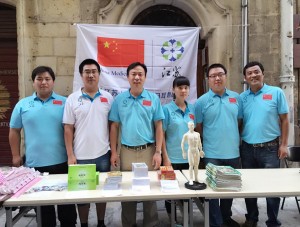 “Last year, I had the opportunity to meet Dr Konrad Mizzi, Minister for Energy and Health, whilst he was visiting some medicine colleges and hospitals in China. At the time, I was glad to see that he seemed very interested in these traditional Chinese herbs, particularly those relating to treat infertility.”
“Last year, I had the opportunity to meet Dr Konrad Mizzi, Minister for Energy and Health, whilst he was visiting some medicine colleges and hospitals in China. At the time, I was glad to see that he seemed very interested in these traditional Chinese herbs, particularly those relating to treat infertility.”“Should treatment with these herbs be allowed in Malta, a Chinese doctor specialised in this sector would be able to attend regularly in our centre in order to diagnose patients and provide treatment. I am aware that presently some people in Malta are using IVF treatment to tackle this issue. Yet in those cases where a couple does not have any problems with the organs themselves, traditional Chinese herbs might offer a less expensive and more reliable natural solution. I must say that in China we have a 70 to 80 per cent success rate for cases of infertility in such situations.”
Dr Xu pointed out that other countries, such as America, have now introduced these methods and they are having very satisfactory results. That is why he is looking very much forward to meet Dr Mizzi in order to discuss further this opportunity.
“If this treatment is made available in Malta, I am sure that many people will benefit from it. Maybe at first, people might be wary or doubtful whether a herb will really be effective. Nonetheless, once people will start obtaining positive results, others will surely follow, and we would be doing a great service to this country.”
(This article was published in ‘Fitness, Nutrition and Well-Being’ Supplement issued with The Times of Malta dated 27th January 2016)
-
A SPECTACULAR WONDERLAND
Travelling at an impressive 300km/hr, a high-speed railway train took 5 hours and a half to reach Shanghai from Beijing. The voyage was impeccably comfortable. The train station was huge and amazing. Yet the actual surprise was the sheer difference between Beijing and Shanghai.
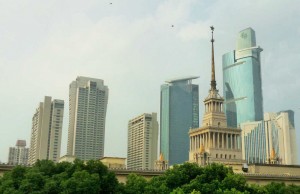 Traffic in Beijing was crazy but we had hardly left Shanghai’s train station when we were already blocked behind a long queue of cars. This is no wonder if one considers that about 24 million people live in this city. Recent modernization and progress in Shanghai have attracted many persons and in the last five years, the population tripled itself.
Traffic in Beijing was crazy but we had hardly left Shanghai’s train station when we were already blocked behind a long queue of cars. This is no wonder if one considers that about 24 million people live in this city. Recent modernization and progress in Shanghai have attracted many persons and in the last five years, the population tripled itself.Along the road, we observed that plain residential high rises were wide to an extreme. Besides them, luxurious or commercial high rises glistened beautifully as if in a bid to outshine the sun itself. Older traditional structures, together with buildings which formed part of the foreign concession areas, claimed the passers-by attention with their distinguished architecture.
Originally, a simple fishing village, Shanghai’s economy expanded rapidly once it was turned into a commercial port. Since at the time, traders could only use the sea or waterways as a means of transportation, Shanghai’s wide harbour began to attract numerous Chinese from various parts of China and also several foreigners. A society of immigrants started to flourish, each of which began to leave their influences in this new city.
In a few years, a large flat muddy area, overgrown with reeds, which was situated on the north bank of Huangpu River, was turned into a zone for foreigners and they named it the Bund. Starting from just a one-sided street, running in north-south direction, the location soon flourished with commercial buildings which increased further the significance and the economy of Shanghai.
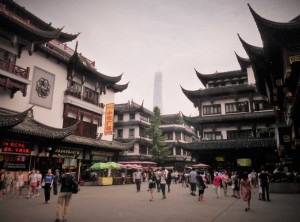 Yet in the mid-19th century, serious conflicts arose between the forces of Western countries and the Chinese, Qing dynasty, after China attempted to suppress the opium trade. Since the 18th century, foreign traders, particularly the British, had been illegally exporting opium which they imported from India. By the 19th century, this trade had grown dramatically, and the resulting widespread addiction in China began to cause serious social and economic disruption. Two Opium Wars broke out in which China was twice defeated and foreign concessions were established. It was in 1943, during the war between China and Japan, that the foreigners decided to abandon Shanghai.
Yet in the mid-19th century, serious conflicts arose between the forces of Western countries and the Chinese, Qing dynasty, after China attempted to suppress the opium trade. Since the 18th century, foreign traders, particularly the British, had been illegally exporting opium which they imported from India. By the 19th century, this trade had grown dramatically, and the resulting widespread addiction in China began to cause serious social and economic disruption. Two Opium Wars broke out in which China was twice defeated and foreign concessions were established. It was in 1943, during the war between China and Japan, that the foreigners decided to abandon Shanghai.Between the 1950s and the 1960s, some of the elder people who resided in Shanghai, proposed to the government to demolish these colonial buildings which reminded them of a bitter past. However eventually, it was decided to retain these structures since they represented a real part of the city’s history, even if painful.
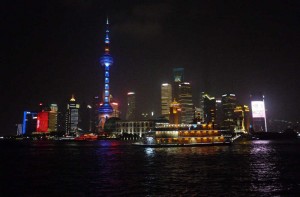 In the last 100 years, the Bund frontage buildings were repaired and reconstructed several times. Today, this area is embellished with prominent and elegant structures which contrast deeply with the opposite side of the Bund wherein some daring and bizarre high rises have been built. At night, the latter, turns into a spectacular wonderland as the colossal structures are fully illuminated in bright and colourful lights.
In the last 100 years, the Bund frontage buildings were repaired and reconstructed several times. Today, this area is embellished with prominent and elegant structures which contrast deeply with the opposite side of the Bund wherein some daring and bizarre high rises have been built. At night, the latter, turns into a spectacular wonderland as the colossal structures are fully illuminated in bright and colourful lights.A visit to this district which looks like a strange combination of London and New York, will reveal why it has become the symbol of Shanghai and the pride of many of its residents. Crowds of visitors gather daily at the Bund in order to enjoy the beautiful scenery on the Huangpu River which divides the old and the modern zones. Nonetheless, if one wants to enjoy the experience to the full, a night boat cruise is certainly recommended.
Our guide from Shanghai explained to us that this city has changed tremendously in these last years. In 1987, there were only 12 high rise buildings in Shanghai, whereas today, there are around 140,000. People have more money in their pockets, education facilities have increased, and life is more comfortable especially due to the efficient and far-reaching subway system. Yet he felt that simultaneously, Shanghai citizens were losing some important characteristics of the city. Indeed, when elders returned to the city after living far away, they could not find their way around as a number of the old landmarks have gone or are engulfed amongst the different modern landscape.
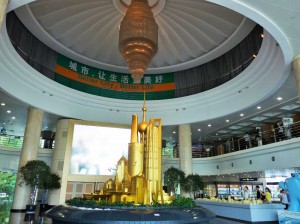 The repercussions of the sudden modernization of Shanghai have always been the focus of the authorities which are trying their very best to mitigate the impact of such changes. Their plans and projects are comprehensively described in the vast exhibitions which are displayed at the Shanghai Urban Planning Exhibition Hall which is located at the People’s Square. The centrepiece of the exhibition is a huge scale model of the city which shows all the existing and approved buildings. Moreover, a circular screen provides visitors with the opportunity to enjoy a fascinating 3D virtual tour around the city of Shanghai.
The repercussions of the sudden modernization of Shanghai have always been the focus of the authorities which are trying their very best to mitigate the impact of such changes. Their plans and projects are comprehensively described in the vast exhibitions which are displayed at the Shanghai Urban Planning Exhibition Hall which is located at the People’s Square. The centrepiece of the exhibition is a huge scale model of the city which shows all the existing and approved buildings. Moreover, a circular screen provides visitors with the opportunity to enjoy a fascinating 3D virtual tour around the city of Shanghai.Photo presentations explain how old buildings which were worth preserving and conserving, were carefully selected and restored, and then given a function in order to revive them. A particular example is the M50 contemporary art district which up to a few years ago was a disused industrial space. Another is the pedestrian walkway of Nanjing Road wherein 100 year old shops were amalgamated with new structures from where now, one can find speciality products of different trades standing next to famous brands.
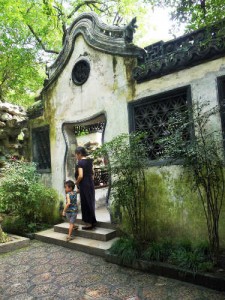 In Shanghai Old Street, which was reconstructed according to traditional Chinese style, visitors can roam around Yuyuan Market and absorb the allure of earlier times, whereas the nearby Yuyuan Gardens provide the beauty and serenity of a green environment. In the outskirts of Shanghai, ancient towns, such as Zhujiajiao, represent life of a distant and far simpler period in Shanghai. Concentrated under Shanghai’s Expo2010 motto ‘Better City, Better Life’, the main message of this place is to urge people to be proud as well as protective of their new city.
In Shanghai Old Street, which was reconstructed according to traditional Chinese style, visitors can roam around Yuyuan Market and absorb the allure of earlier times, whereas the nearby Yuyuan Gardens provide the beauty and serenity of a green environment. In the outskirts of Shanghai, ancient towns, such as Zhujiajiao, represent life of a distant and far simpler period in Shanghai. Concentrated under Shanghai’s Expo2010 motto ‘Better City, Better Life’, the main message of this place is to urge people to be proud as well as protective of their new city.A delightful wider look at the landscape of the city of Shanghai can be appreciated at a choice of revolving restaurants which are available on high towers. Definitely a surreal experience which gives you the ultimate impression of being on a totally different planet.
(This article was published in Escape Suppliment of The Sunday Times of Malta dated 13th September 2015)
-
Unlocking the Great Wall’s stories
‘He who has not climbed the Great Wall is not a true man’ declares a Chinese saying.
After being confronted by the challenging steps of this legenday wall, I must admit that I understand fully the meaning behind this expression.
Constructing the Great Wall of China
 The Great Wall consists of a massive series of fortifications which extend over five thousand kilometres from east to west in north China. Since it outstretches over a number of provinces, one can visit its diverse sections from various locations. Its construction took around two thousand years and it involved the input of several dynasties which were ruling the country during different period.
The Great Wall consists of a massive series of fortifications which extend over five thousand kilometres from east to west in north China. Since it outstretches over a number of provinces, one can visit its diverse sections from various locations. Its construction took around two thousand years and it involved the input of several dynasties which were ruling the country during different period.Since for many years, various Chinese states were at war against each other, by the 7th century BC, the locals had already mastered an excellent skill in the building of protective walls with which to defend their villages. It was from this period that construction of the Great Wall commenced.
In 221 BC, Qin Shi Huang succeeded to win over all his opponents. He unified China for the first time, established the Qin Dynasty, and became the first Emperor. To impose a centralization of authority, he ordered the destruction of various defensive walls which had been built around the country by different feudal lords. Instead, he constructed new walls which connected a number of fortifications that were situated in the northern side of his empire. These were intended to shield his people and his country from the opponent nomadic tribe Xiongnu which resided in this area (today known as Mongolia).
It was no easy feat to construct these walls in the chosen locations which winded throughout valleys or climbed across mountains. At the time, no machinery was available to facilitate this grueling work. Yet, the Chinese managed to erect these walls by utilizing the material that was available in each particular zone and by working according to the contours of the terrain.
No one knows how many people worked or died during the construction of this wall. Many insist that the total number could easily reach millions. Certainly, their effort led to the creation of a unique masterpiece which today is regarded as one of the seven wonders of the ancient world. In 1987, the Great Wall of China became also part of the UNESCO World Heritage List.
A popular legend
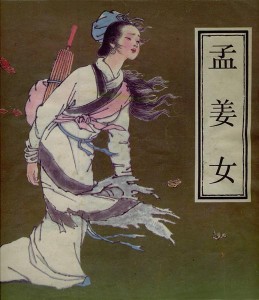 This wall is imbued with many narratives and legends. Yet the most popular is surely that of Meng Jiang Nü; a young woman who is believed to have lived during the 3rd century BC, in the Qin Dynasty.
This wall is imbued with many narratives and legends. Yet the most popular is surely that of Meng Jiang Nü; a young woman who is believed to have lived during the 3rd century BC, in the Qin Dynasty.Her story recounts that one day, Fan Qi Liang, a young man who had been engaged to work on the Great Wall, succeeded to escape from this strenuous job. He ran with all his might along the way until at one point, he was so exhausted that he stopped to hide in the garden of Meng’s father.
The two fell in love immediately as soon as their eyes met, and some time after, they got married. Yet unfortunately, their happinness did not last long as the man was located by soldiers and he was taken back to work on the wall.
The woman waited and waited for her husband’s return. But when winter was close and he still did not come back, she sewed some warm clothes for him in order to protect him from the cold. She went in search of him at his work place but after she looked out for him wherever she could and inquired about him, she was finally informed that her husband had died and that he had been buried within the wall itself.
This tragic news shattered the woman’s spirit and she was so griefed that she spent a whole day and a whole night weeping beneath the wall. Her desperation ran so deep that suddenly, the wall in front of her crumbled and a number of corpses slid out of it.
Shocked at this gruesome scene, Meng Jiang Nü cut her finger and she allowed her blood to trickle on the corpses. At one point, she noticed that all her blood ran to a particular corpse and it was then that she recognized her husband’s body. She gathered him lovingly and gave him a decent burial. Then, she walked to a river and ended her life within.
Juyongguan Pass – Beijing
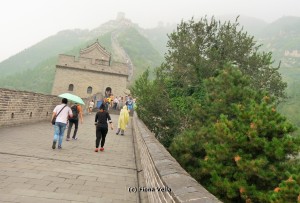 I had read and heard so much about the greatness of this wall that when I arrived at one of its sections in Beijing, known as Juyongguan Pass, I simply stood in silence and in awe.
I had read and heard so much about the greatness of this wall that when I arrived at one of its sections in Beijing, known as Juyongguan Pass, I simply stood in silence and in awe.My eyes ran afar, up into the sky where a thick fog was hiding the highest part that was visible from the ground. Located at around fifty kilometres away from Beijing, this part of the wall is about 4000 metre long and is situated amongst the mountains of Changping District.
This pass has always been renowned for its strategic significance and its impenetrability. Notwithstanding this, in 1644, a group of rebellious farmers led by Li Zicheng, managed to enter into Beijing by overcoming this area. It is said that this happenned not because of any weakness in the wall but due the fact that the local people were too impoverished to resist.
Today, Juyongguan Pass is distinguished for its lovely scenic views of the surrounding forests, particularly since these change their colours according to season.
Experiencing the magic of the Great Wall
We arrived at nine in the morning in order to avoid the crowds but there were already many visitors climbing the wall. The weather was not very welcoming as it was drizzling and the fog made it difficult to take very good photos. Yet nothing could stop us from climbing that legendary wall which we had all dreamt so much about!
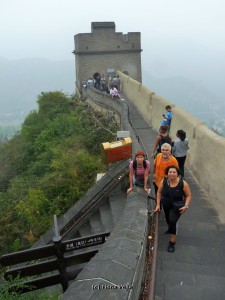 Up we went the first steps but soon we realized that it was not going to be that easy to climb too far. For the Great Wall’s steps were constructed in differing heights in order to make it difficult for the enemy to run up and make a surprise attack. Whilst some of the steps were low, others were quite high and after a short time, if you’re not the sporty kind, you’ll definitely find yourself out of breath.
Up we went the first steps but soon we realized that it was not going to be that easy to climb too far. For the Great Wall’s steps were constructed in differing heights in order to make it difficult for the enemy to run up and make a surprise attack. Whilst some of the steps were low, others were quite high and after a short time, if you’re not the sporty kind, you’ll definitely find yourself out of breath.Step after step, we arrived at the first tower which consisted of a number of small rooms. I decided to check out a set of narrow stairs which led to the tower’s roof and from there, the overview of the open landscape was even more splendid. I looked around in a blending state of rapture, wonder and disbelief as I imagined that this could have been the same view that the legendary soldiers watched over. For a moment, time seemed to stop and the present melted into the past as I simply stood there holding on to the ancient stones.
I could have stayed there to absorb within me all the history of the place but the group needed to move on and so, we climbed further. Over all, the set up of the wall repeats itself as its length is divided into steps and a number of towers. Yet I can say that I would have continued to climb all day if we did not have planned to visit other sites.
Going down the steps was relatively easy but by then, the place had become quite crowded with people of all nationalities who came to visit.
A love bound to eternity
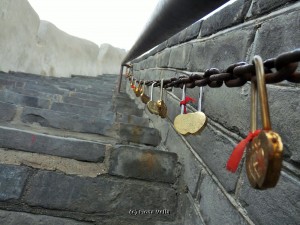 As I stole a last glance at this architectural and historic marvel, I noticed a quantity of lovelocks that were fastened to chains running along the Great Wall. On a closer look, I found out that these were decorated with heart designs and the names of couples were engraved on each of them. Our guide told us that those lovelocks formed part of an old Chinese tradition which stated that if a couple wrote their names on a lock and closed it on this chain, their love would be eternal, just like the destiny of this mythical wall.
As I stole a last glance at this architectural and historic marvel, I noticed a quantity of lovelocks that were fastened to chains running along the Great Wall. On a closer look, I found out that these were decorated with heart designs and the names of couples were engraved on each of them. Our guide told us that those lovelocks formed part of an old Chinese tradition which stated that if a couple wrote their names on a lock and closed it on this chain, their love would be eternal, just like the destiny of this mythical wall.(This article was published in the Travel Supplement of the Sunday Times of Malta dated 21st June 2015)
-
Discovering the real art of a new culture
China’s art sector is probably one of the most dynamic today since Chinese artists are constantly re-imagining the boundaries of art as they question their country’s role in the world. These artistic works can be viewed in the several popular art districts, key galleries and museums which are located in various areas around China.
751D Park – Beijing
I had thought that a visit to Beijing would only comprise an itinerary to historical sites. Therefore, this bustling contemporary art centre proved to be quite a surprise.
Having been transformed from an industrial plant into an artistic hub, 751D Park boasts an area of 40,000 square meters and is now a very renowned area for art lovers. Its distinguished Bauhaus-style architecture has succeeded to blend harmoniously with the places’s new character which now houses many art galleries, bookshops, cafes and restaurants.
Although I am not an avid art enthusiast, a stroll around the various shops and art exhibitions of this park served as a portal to another facet of China and its culture. Each outlet provided the opportunity to discover and purchase works of unique styles, original designs and ultimate creativity.
 I was particularly captivated by Liu Fei’s artistic exhibition named ‘An Enchanting War’. The artist described his sharp creations as his contemplation of future wars. Through them, he attempted to engage in social and political life in order to express his distaste and criticism on war. His main theme examined whether future warfare would be a performance of pretences? In his strong and bizarre artworks, there was no boundary between beauty and ugliness, and violence and contention were combined cruelly.
I was particularly captivated by Liu Fei’s artistic exhibition named ‘An Enchanting War’. The artist described his sharp creations as his contemplation of future wars. Through them, he attempted to engage in social and political life in order to express his distaste and criticism on war. His main theme examined whether future warfare would be a performance of pretences? In his strong and bizarre artworks, there was no boundary between beauty and ugliness, and violence and contention were combined cruelly.The National Art Museum of China – Beijing
The National Art Museum of China is dedicated to collection, research and exhibitions of modern and contemporary artistic works in China. Although this structure started to be constructed in 1958 and was open to the public in 1963, its architecture features the traditional Chinese style as the main building is roofed with yellow glazed tiles and surrounded by corridors and pavilions.
This museum covers an area of more than 18,000 square meters and it includes 17 exhibition halls throughout its 5 storeys. It prides itself with more than 100,000 pieces of various collections, most of which are representative works of different periods and great artworks of Chinese art masters from the end of the 19th century till today.
 Since its establishment, this national museum has organized thousands of various artistic exhibitions which reflect the development of Chinese art. These activities have attracted millions of visitors each year and so this museum has also served as a significant platform for the artists involved.
Since its establishment, this national museum has organized thousands of various artistic exhibitions which reflect the development of Chinese art. These activities have attracted millions of visitors each year and so this museum has also served as a significant platform for the artists involved.During my visit, amongs its selection of expositions, this museum was holding the exhibition ‘Beautiful China: Call of Humanism’ which entailed the First National Fine Art Exhibition to help the disabled. The ensemble of 200 pieces of artworks included masterpieces of top artists of the contemporary art world,as well as works of disabled calligraphers and painters. Funds from the sales of these artworks were collected in order to assist the needs of the thousands of disabled Chinese individuals.
M50 – Shanghai
50 Moganshan Road or M50 art district as it is more popularly known, was a former textile mill in central Shanghai which has now been converted into a major zone of artistic galleries and exhibition spaces.
This quarter started to become popular with artists in the year 2000 when the first individuals were initially attracted by the cheap rent of the disused industrial space. Soon, other artists followed suit and nowadays this complex has become known for its trendy and high art quality.
 Art lovers who visit this place get a chance to enjoy and purchase some fantastic and unusual works directly from the artists themselves. The allure of this zone lies in the variety of displayed works using several mediums.Prices range from affordable to really expensive but one is expected to negotiate.
Art lovers who visit this place get a chance to enjoy and purchase some fantastic and unusual works directly from the artists themselves. The allure of this zone lies in the variety of displayed works using several mediums.Prices range from affordable to really expensive but one is expected to negotiate.Popular with both local and international visitors, this art quarter is unpretentious but interesting and often thought provoking. Amongst the wide selection of creations, it is engaging to notice also some works of a rebellious nature.
(This article was published in the Travel, Leisure and Food Supplement in the Sunday Times of Malta dated 15 March 2015)
-
Stepping through the Forbidden City’s gate
For many years, I read several features and watched various documentaries regarding the Forbidden City in Beijing. However, once I found myself in front of Wumen, its main entrance, I simply stood there in silence and awe.
At an altitude of 38 metres, this area, which is also known as the Meridian Gate, is the highest section of the Forbidden City. Its imposing nature with five towers looking upon this square gave me shivers especially when I recalled that here, in the old days, the captured prisoners-of-war used to be presented to the emperor, whereas those sentenced for capital punishment were executed.
As originally intended by those who constructed this site, I felt small and bewildered in the presence of such magnitude and as I stepped further through the gate, I felt thankful that nowadays this is only a tourist site.
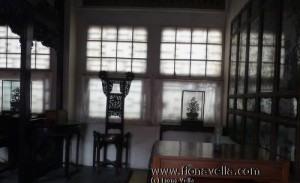 The Forbidden City was built to serve as the emperors’ royal palace. Within it, the emperors of the Ming and Qing dynasties carried out their administration and lived together with their families. In fact, this site was used as the residence of 24 emperors until the last one, Aisin Gioro Puyi, emperor of the Qing Dynasty, abdicated in 1911.
The Forbidden City was built to serve as the emperors’ royal palace. Within it, the emperors of the Ming and Qing dynasties carried out their administration and lived together with their families. In fact, this site was used as the residence of 24 emperors until the last one, Aisin Gioro Puyi, emperor of the Qing Dynasty, abdicated in 1911.Emperor Chengzu of the Ming Dynasty started the construction of this city in 1406 and its completion took 14 years. Around 100,000 skilled technicians and millions of labourers were involved in this architectural masterpiece.
Most of this magnificent palatial complex was built from wood and it is the largest wooden cluster in existence in the world today. Other material used included white marble from Fangshan which is situated in the limits of Beijing, and granite from Hebei Province.
It was not easy to ship these stones to the city since there was no machinery at the time. Yet the Chinese succeeded to conclude this outstanding project by carrying this material on wooden rollers during summer and by sprinkling the roads with water in mid-winter in order to make an ice-path which could ease transportation. Water for the latter use was made available by digging out a well every half kilometer.
Eventually, the whole city covered an area of 720,000 square metres and within it, one could find numerous palaces, pavilions, squares and gardens. In all, 9,999.5 structures were built; the half room accommodates only a staircase.
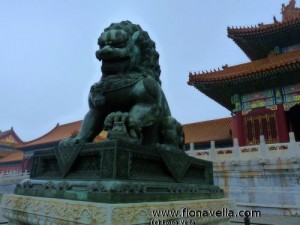 It is interesting to note that the emperor could not have 10,000 rooms in his city since it was believed that the deity emperor Hade had that amount of structures in his Heavenly Palace. Therefore, out of respect, his son, who was the emperor on earth, could not have a residence as spacious as that of his father. Meanwhile, this huge amount of rooms in the Forbidden City was intended to prolong the life of the earthly emperor.
It is interesting to note that the emperor could not have 10,000 rooms in his city since it was believed that the deity emperor Hade had that amount of structures in his Heavenly Palace. Therefore, out of respect, his son, who was the emperor on earth, could not have a residence as spacious as that of his father. Meanwhile, this huge amount of rooms in the Forbidden City was intended to prolong the life of the earthly emperor.Along the centuries, various parts of this ancient city were restored or rebuilt. However, its basic form and layout remains in the original state. In fact, its structures are spread out in an orderly manner alongside the central axis line which goes through from south to north. Moreover, its layout indicates the feudal hierarchy and reflects the traditional philosophy of yin-yang and the Five Elements.
The Forbidden City is surrounded by 10 meter high walls and at each of its four corners there is a tower. Outside these walls, a 52 meter wide moat full of water encircles the city in order to strengthen its defense system.
Thousands of tourists from various countries visit this site daily and yet the grandeur of this place is so amazing that its space seems unable to ever be exhausted.
 The largest square in the Forbidden City is Taihe Dian and it has an area of 30,000 square metres. On its four sides, one finds a number of bronze vats which used to be filled with water in order to prevent fire. Water was provided by the Inner Golden Water River which ran across this section of the city. Moreover, this river had the function of draining off rain water and to decorate the square.
The largest square in the Forbidden City is Taihe Dian and it has an area of 30,000 square metres. On its four sides, one finds a number of bronze vats which used to be filled with water in order to prevent fire. Water was provided by the Inner Golden Water River which ran across this section of the city. Moreover, this river had the function of draining off rain water and to decorate the square.On the other hand, in the square which lies in front of the Gate of Supreme Harmony, visitors can observe the hall wherein the emperors administered their power, held ceremonies and summoned ministers. In this outer court, there is also the largest pair of lions in the whole city; the male has a ball under his paw, whereas the female plays with a cub.
Curiously, in the Forbidden City, there is also the Palace of Abstinence wherein the emperor stayed and fasted for three days before he celebrated the sacrificial ceremony to the heaven and earth.
Contrarily, other areas within this magnificent city were intended to appease the emperor’s pleasures; including numerous structures reserved for his concubines.
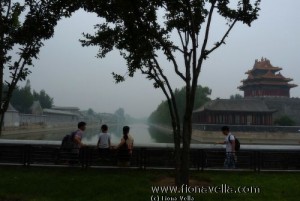 These concubines were selected amongst the most attractive females and were expected to dedicate their lives in order to please their emperor. Yet not all these concubines had the chance to sleep with the emperor; some only once, some not at all.
These concubines were selected amongst the most attractive females and were expected to dedicate their lives in order to please their emperor. Yet not all these concubines had the chance to sleep with the emperor; some only once, some not at all.Surely, those who did not succeed to attract the emperor’s interest were disregarded in a corner of the palace but they were never allowed to marry anybody else. Therefore, the main aim of these imperial concubines was the opportunity to bear a child of the emperor so that they could acquire more power. Indeed, that concubine whose son managed to become the next emperor was even given the title of Empress Dowager.
Due to the massive size of this city, it is impossible to visit it all. Nonetheless, I believe that I have seen enough to impress me and to leave a memorable imprint on my mind.
The exquisite designs and colours which were used in its construction are truly fascinating and marvelous. Likewise, the ancient furniture and decorations which adorn its palaces and halls are unique and superb.
When this city was still in vigour, no one was allowed to enter into it without a permit. That is why, it is known as the Forbidden City. Yet in 1925, when the Qing Dynasty was over, this site was turned into a museum and in fact today, this city is also known as the Palace Museum.
Within this period, around one million relics were collected from this city and many of them are exhibited in its illustrious halls. These artifacts include objects made from wood, bronze, pottery and porcelain that were designed by skilled artists during the Ming and Qing Dynasties. Other masterpieces comprise precious artworks, sculptures and numerous other treasures.
Meanwhile, the Imperial Garden which lies at the end of the city is another attractive facet of this place. In ancient days, this was a private retreat for the imperial family and the imperial concubines.
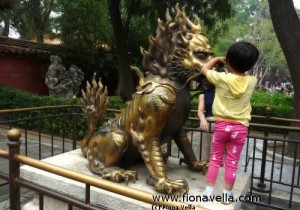 There are around twenty architectural structures in this garden which include pavilions, rooms, towers and halls. Each one of these bears a different style and is arranged symmetrically in hierarchical order.
There are around twenty architectural structures in this garden which include pavilions, rooms, towers and halls. Each one of these bears a different style and is arranged symmetrically in hierarchical order.Rare flowers and trees were planted in this garden, some of which still survive today. This place was also adorned with a pond full of fish in order to create a sense of harmony and peace.
One of the most renowned sections in this garden is Duixiushan; an artifical hill built of Taihu Lake Rocks of varying shapes. Its centre was formed into a cave and two stairways spiral up to the top from its southern and eastern sides. The imperial family used to climb up this hill to reach the Pavilion of Imperial View which sits at the top in order to enjoy the spectacular scenery during significant celebrations.
In 1961 this city was included in the List of the Historical Monuments and Cultural Relics under State Protection and due restoration and preservation took place. In 1987, UNESCO inscribed the Forbidden City as a World Heritage Site.
(This article was published in the Travel Supplement of the Sunday Times of Malta dated 15 February 2015)
-
Shop around for the best look at life on the streets
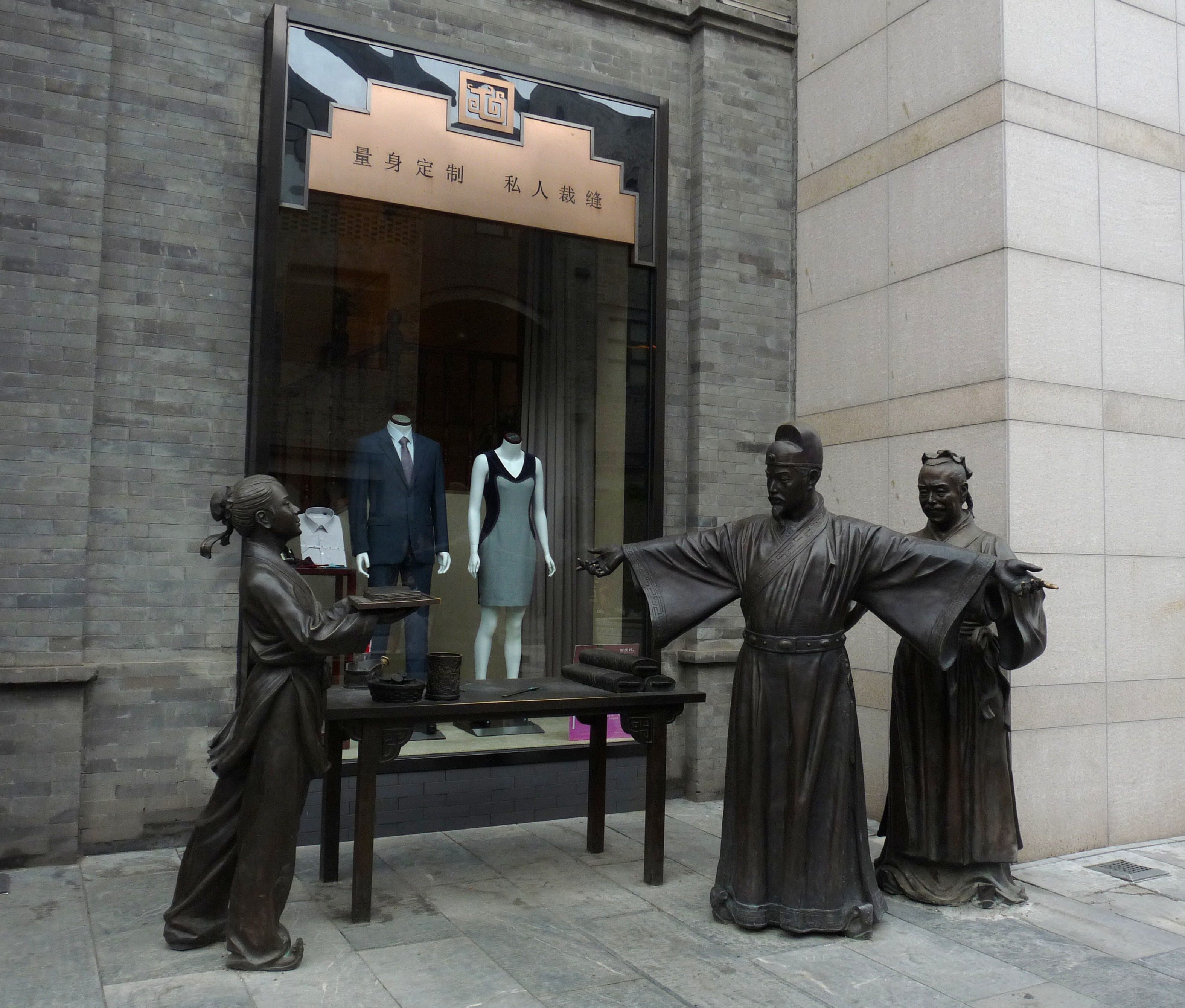

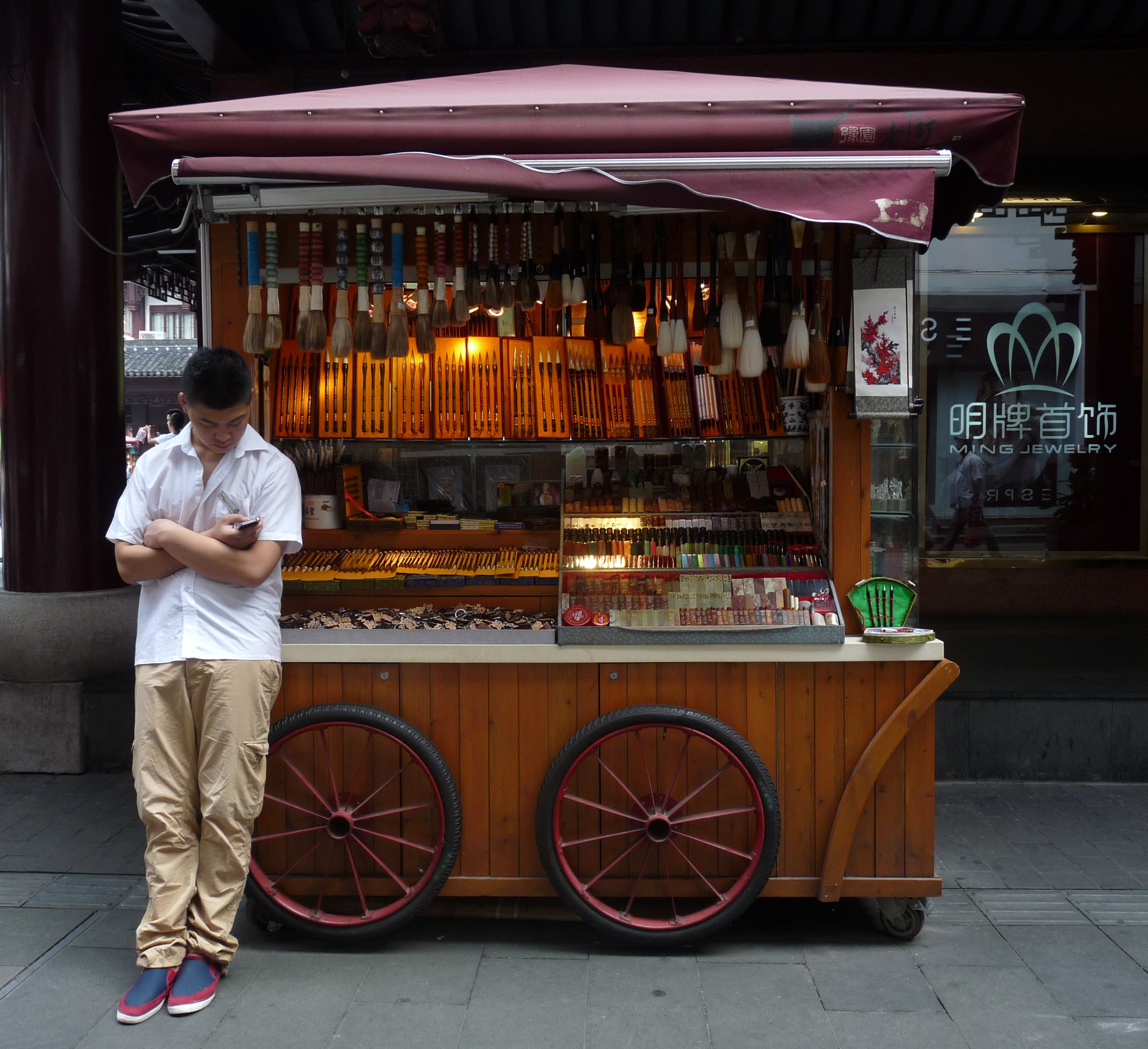
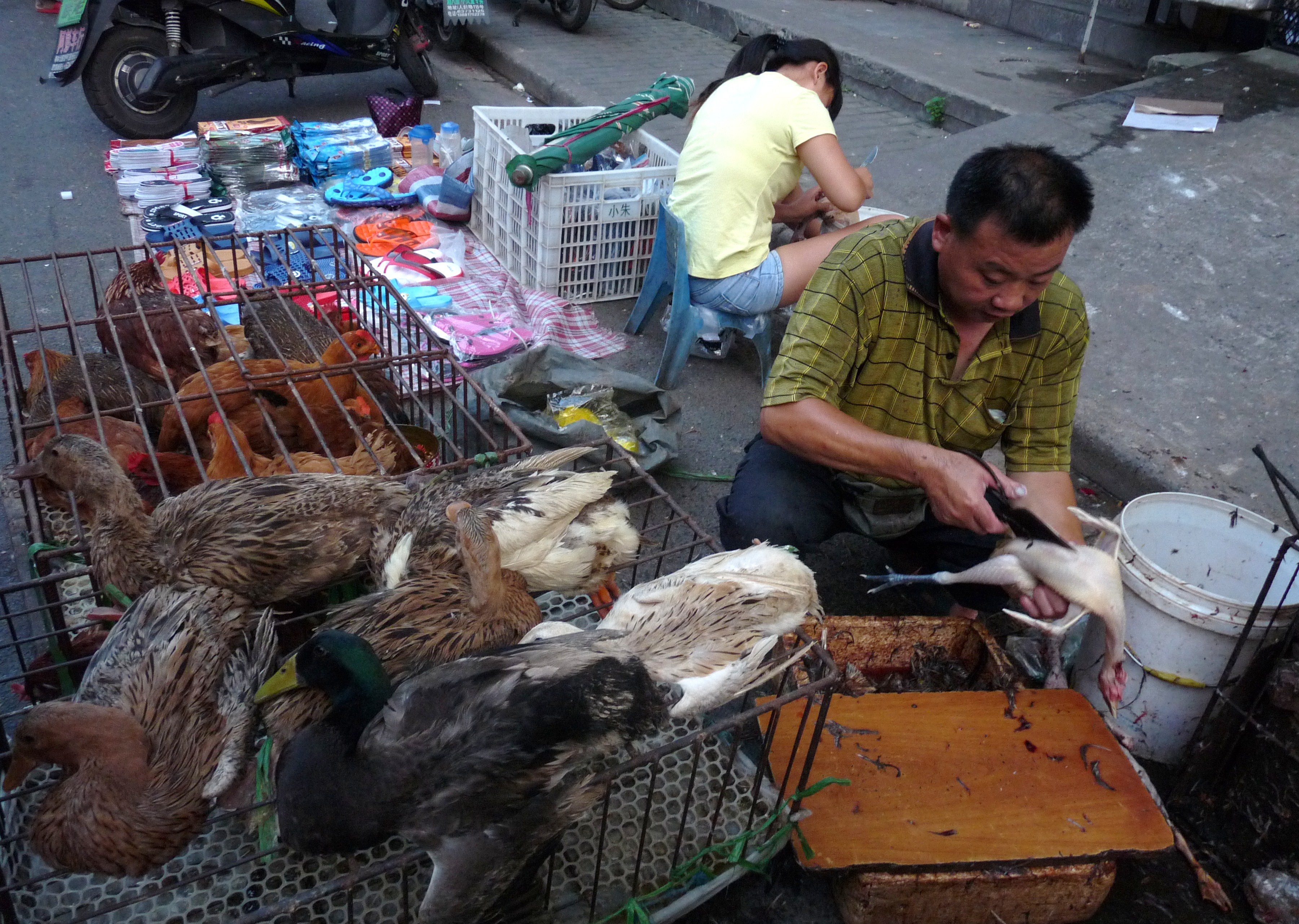
The cities of Beijing and Shanghai are definitely a mecca for those who love shopping. Never ending roads brim with hundreds of shops which offer an endless choice of all sorts of products.
Ancient shops of different traditional trades stand side by side to modern ones which sell famous brand commodities. Flea markets provide the opportunity to look out for unusual items or for a good bargain but one must always keep in mind that most of the items are not genuine.
Shopping can also be a way of getting closer to the locals especially in those areas where one is expected to negotiate the price. At times language could be a barrier since not all the Chinese can communicate in English. However, somehow, if you really want to purchase something, you’ll surely find a way to get across.
Qianmen Street – Beijing
Qianmen pedestrian street runs south from Tiananmen Square, just along the Beijing central axis for about a kilometre.
This popular zone bears its origin to the ancient times of the Ming and Qing Dynasties when it was already renowned for its lantern fairs, theaters and tea-houses. Yet unfortunately, in 1900, this area was burnt down to ashes when Beijing was ransacked by the Eight-Nation Alliance.
The present Qianmen Street has been rebuilt into four zones with particular areas designated for culture, food, shopping and entertainment. Stepping from one shop to another is like entering into a different world altogether.
Elegant shops selling expensive jewellery with a particular focus on jade stand next to bargain outlets bursting with a multitude of souvenirs and knick knack objects. Popular Western fast-food outlets like Mc Donalds and KFC compete with traditional Chinese cuisine such as Qianmen Quanjude Duck Restaurant for the attention of hungry clients.
An old style tram runs from north to south of Qianmen Street. However, for those who really want a taste of Chinese culture, walking is definitely better.
Wangfuying – Beijing
Wangfujing is very famous both with locals and with tourists as its outlets extend over a total length of about two kilometres. This flourishing business quarter dates back to 1260 and it has a long interesting history.
In the wide main street, once again, West meets East since one finds huge shopping malls with international designer brands standing next to Beijing renowned trades, such as Shengxifu hat store, Tongshenghe shoe shop, and the Wuyutai tea house.
However, here, the real delight for tourists lies in the narrower side streets which look rather like a busy beehive. Indeed, this zone is definitely not recommended for those who hate crowded places or for those faint at heart. For this is where you’ll witness the roots of the traditional Beijing, especially through some of the exotic foods which you will be offered.
The different smells coming out of the numerous food stalls will entice you to look closer and maybe to try out something. The vast choice will consist of fresh fruit, dumplings, fried foods, and plenty of kebabs with all sorts of meat including lamb, chicken, pork, starfish, seahorse, worms, insects and live scorpions!
Nonetheless, if you lose appetite, there is still more to see and buy in the other outlets which boast the true colours of China. Your preference and the amount of money which you are ready to spend will be the only limits. Exquisite shoes, silk scarves and ornaments, clothes, wood creations, colourful masks, stuffed pandas and toys, and a torrent of souvenirs are some of the items available in a much longer list.
At the end of this visit, you’ll feel as if you have just been through a whirlwind of experiences. Definitely unforgettable!
Nanjing Road – Shanghai
Shanghai is a different world altogether from Beijing and this is clearly evident whilst walking along Nanjing Road. Believed to be the first shopping street in China, this road stretches for more than five kilometres with hundreds of different shops on each side.
Here, shopping malls, department stores and boutiques with luxury brands like Dior, Chanel, Armani, Prada and Calvin Klein compete for clients’ attention with elegant and costly products. In fact, more than a pedestrian shopping street this area has also become a zone for both locals and visitors in order to experience the culture of modern Shanghai.
It is best to visit Nanjing Road in the evening when the area is fully lit and quite spectacular.
Yuyuan Bazaar – Shanghai
This is an outdoor bazaar which stands next to the famous Yuyuan Garden. Its attraction lies in the wooden architecture of the shops and market stalls and in the traditional items which they sell.
Since Shanghai is close to Suzhou, one will find a good choice of silk products here. Moreover, amongst the amazing array of traditional Chinese products, one can select amongst paintings by folk artists, calligraphy works and tools, including ink, paper, brushes, pens, and ink slabs, bamboo and wood carvings, bronze wares, porcelain tea-sets, jade pieces and pearls from Taihu Lake, to mention only a few.
There are no boundaries to what you can actually find whilst exploring this bazaar. Indeed, in offhand corners, you might see people selling small animals and reptiles, and also bracelets of simple but fragrant flowers.
A food market in Shanghai
It is very easy to find yourself completely enthralled by the exciting and dynamic city of Shanghai, thereby feeling urged to explore also other areas which are outside the usual guided tours.
Particularly endearing is the sheer contrast between the ultra-modern neon-lit high rises lying at the background of the raw and coarse atmosphere of meagre street food stalls where many locals gather to buy their grocery needs.
Once again, your senses will be fully assaulted with unusual activities, smells and sounds. Here you can observe the wide choice of foods available which includes eggs of different poultry, river and sea fish and crustaceans, vegetables and fruit of whatever type and size, and various herbs and tea leaves.
Live chicken and ducks look out from cages whilst one of them is being killed and cleaned there and then for a customer. Cute puppies look out expectantly from other cages, their destinies depending on who’s going to buy them.
Surely, a visit to any of these markets should be included in one’s itinerary in order to experience the real China.
(This article was published in the Travel Supplement of The Sunday Times of Malta dated 11th January 2015)
Travelogue
Archives
| M | T | W | T | F | S | S |
|---|---|---|---|---|---|---|
| « Jan | ||||||
| 1 | 2 | 3 | 4 | 5 | 6 | 7 |
| 8 | 9 | 10 | 11 | 12 | 13 | 14 |
| 15 | 16 | 17 | 18 | 19 | 20 | 21 |
| 22 | 23 | 24 | 25 | 26 | 27 | 28 |
| 29 | 30 | |||||
Recent Posts
- A MATTER OF FATE
- MALTA’S PREHISTORIC TREASURES
- THE MAGIC IS IN THE DETAIL
- THE SELLING GAME
- NEVER FORGOTTEN
- Ġrajjiet mhux mitmuma – 35 sena mit-Traġedja tal-Patrol Boat C23
- AN UNEXPECTED VISIT
- THE SISTERS OF THE CRIB
Comments
- Pauline Harkins on Novella – Li kieku stajt!
- admin on IL-KARNIVAL TRAĠIKU TAL-1823
- Albert on IL-KARNIVAL TRAĠIKU TAL-1823
- Martin Ratcliffe on Love in the time of war
- admin on 24 SENA ILU: IT-TRAĠEDJA TAL-PATROL BOAT C23